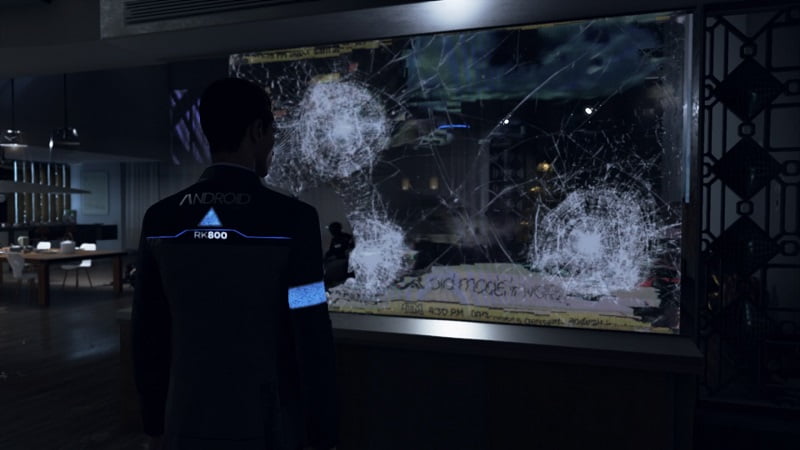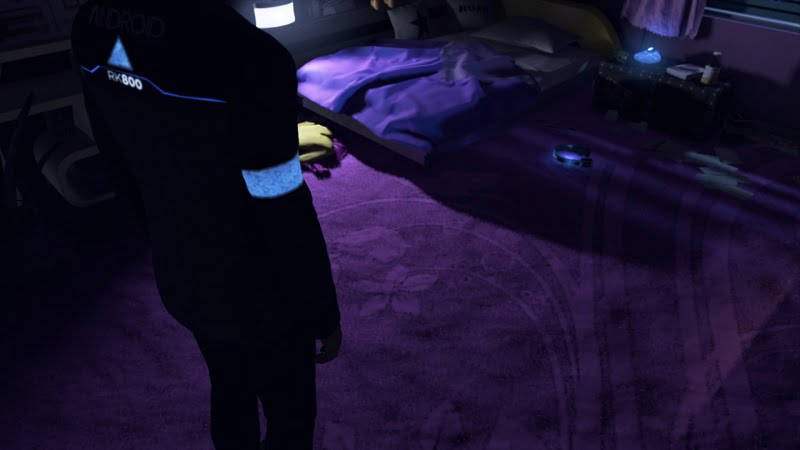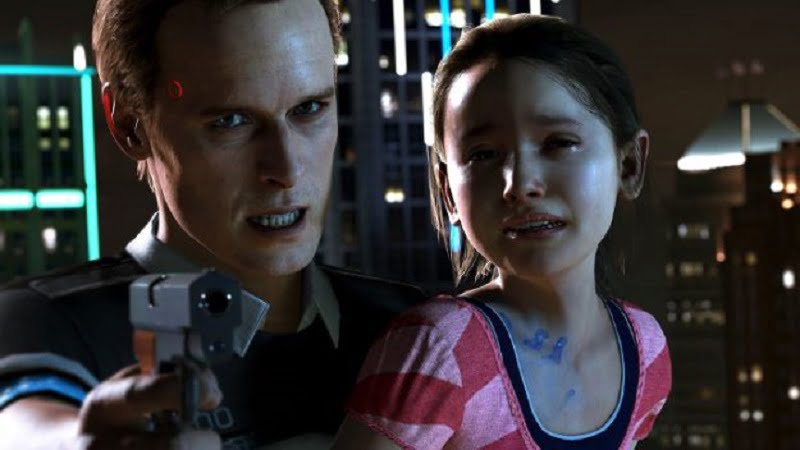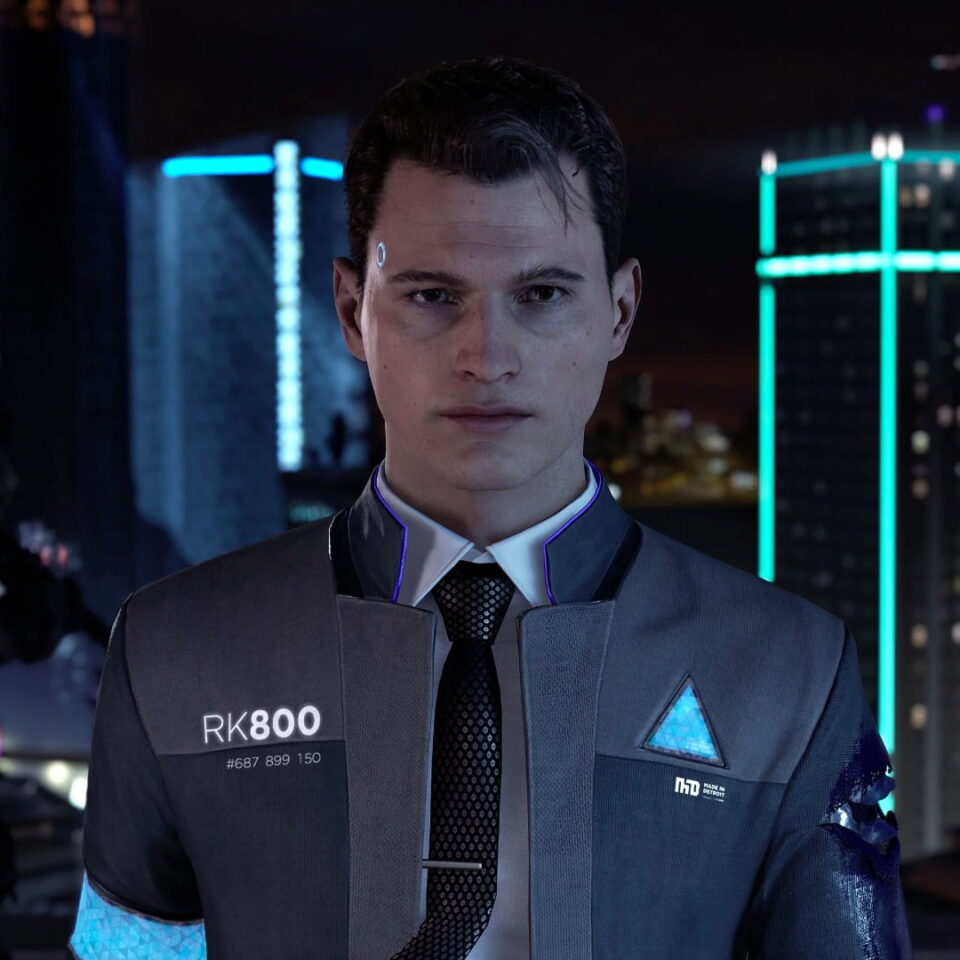To understand David Cage – his desires and shortfalls, his ambition and madness – you need only look at the opening tutorial in Fahrenheit.
What a zany, brilliant, rubbish conceit it was: a crash-test dummy, a film set, the pause menu encrusted with the ‘play’ and ‘stop’ buttons of a TV remote, and, of course, Cage himself. He appeared to us as his own platonic conception of himself: rendered in-engine. L’Express once called him “The Godard of the pixel,” but in that tutorial he spoke, in his broken French-English accent, with the same missionary zeal as that raven-haired wonderloon, Tommy Wiseau. And perhaps the same delusions. Convinced entirely of the medium’s magic, he not only told us how to open doors with the analogue stick, but encouraged us to, “Do it slowly to really feel you’re controlling your character’s arm.”
It’s a line which should rebuff any claim that Cage might be better served directing movies; the man has always been obsessed with feel, with forging bonds – tangible ones – between player and character. Think of the finger contortion necessary to slip through those electrical wires in Heavy Rain, or the furious pad-shaking needed to avoid strangulation and drowning in Beyond: Two Souls. Though those games veered off-course from the grand vision laid out in Fahrenheit – one of gaming rearranging its atoms and striving for the emotional complexity of cinema – other games took heed, and took the lead.
The Walking Dead, with its forking moral conundrums; Life is Strange, and its delving into character and cosmic dilemma; Gone Home‘s obsession with everyday objects and our physical interaction with them; and What Remains of Edith Finch, with its commingling of fantasy and reality, and its chimeric mix of mechanics. The landscape has shifted. Detroit: Become Human, Cage’s latest game, arrives next week, and its release will hardly herald the return of the art game doyen, so much as that mad fellow that had Ellen Page doing Kung fu in Somalia with a pet poltergeist.

But to play Detroit (a free demo is available on PSN) is to be reminded that, even now, no one else makes games like this. The demo is set in a dead-tech apartment, cut from metal and smoked glass and doped in an infra-palette of blues and greys. An android named Connor arrives to defuse a hostage situation, as police officers crowd the halls. They don’t look at Connor if they don’t have to, and when they speak to him, it’s as if they’re being degraded having to talk to a thing. As he enters the main hallway, a woman begs him to save her daughter before realising his nature. She becomes hostile and screams at the officers for sending in that ‘thing’.
We get a good look at Connor: his face is pale, vacuum-packed; at his temple, a whirling blue roundel, familiar to anyone with Windows 10, makes a GUI of his thoughts. He’s thinking things that David Cage might. He’s thinking like a game developer. The apartment is glossed with footnotes from Connor’s brain: directives and analysis, probability percentages popping up, signs of struggle demarcated. It is a place to be dissected.
A fish, freed from its tank by a stray bullet, flops in a shallow puddle on the floor. You’re given the choice to save it or leave it. A bonsai tree, of vibrant green, stands freshly clipped and clasped in glass. In the living room there is a sculpture of a spinal column with leaves sprouting from the top. Off to one side, a young girl’s room leaps out in rich plum and pink.

There’s an architectonic feel to the place, everything set out to prod your emotions in some way or another. The acting is, as in many of Cage’s games, from the George A. Romero school: unironic and earnest; pulpy lines delivered with absolute conviction. It has the potency of a B-movie, blunting the edge of a certain kind of criticism with its heart – big, and laying in the right place.
Out on the roof terrace, a raw-boned android named Daniel has taken a young girl hostage. Her parents were planning on replacing him with a newer model, which he finds, understandably, troubling. His eyes dart left and right as you try to talk him down. This scenario could go any number of ways. In a switchblade-reversal, Daniel mirrors Rutger Hauer on that rainy rooftop: holding his hostage, with one outstretched arm, over the ledge above the streets far below. For a split second a circling chopper draws his attention. I’m given the option to rush him and save the girl. I take the chance. In a flash, a blunt shove, and a piston-swipe, Connor cradle’s the girl in his arms as Daniel is sent into free-fall over the side of the building, firing parting shots into Connor’s back and head. The girl is safe.
Connor is crouched on the ground, the luminous circle at his temple blinks red and, finally, goes out. He dies in the truest sense: shifting from person to thing, vacant of anima. From those mannequins in Fahrenheit, by way of the Ns-5s from I, Robot, to the ‘Kara’ tech demo, the androids in Detroit seem the culmination of an idea that’s been rattling the bars of Cage’s mind for well over a decade: video games as simulated life, simulated life as video game. They seem like the enmeshing of player with avatar. Connor’s body is uninhabited, as if the player has left it, the game shut down.

The demo drew to a close. But there was more yet to come. A flow chart springs up, indicating the carefully manicured tree of possibilities the entire scenario could have yielded. This chart might be something bold: a halogen cast through the inner piping of branching narrative games, an intricate thing, each choice you make a hollow-point bullet spalling in different directions. But it felt synthetic: a way to schematise emotion and free will in the manner a game developer must, but that a player must ignore. An autopsy of feeling. We become Connor, our eyes bent toward analysis, toward the replaying of scenarios over and over; so too do we become Cage, our minds cast to the medium, its possibilities and boundaries.
The flowchart asks you a question: would you like to start over and make different choices? It’s here that some might recoil. Is this the dreaded ‘replay value’? ‘Value’: a bastard word and the enemy of good stories, good art. The prospect of starting a game over immediately, pulling it apart, reforming it, is surely the antithesis of enjoyment. It seems the flowchart thrives on the fear of missing out – that anxious nagging that there’s more to experience, that we have yet to wring every last drop from our product.
In the days that followed I was whipped by an exquisite moral cross-wind. I had saved the girl at the expense of Connor’s ‘life’. It wasn’t bravery; there can be no bravery in a place without consequence. But what then, did I think of Connor? How did I value his life? There was something troubling about his ceasing to be. He didn’t die so much as was abandoned. The player had left the game. The gung-ho nature of the action game had deceived me. I had objectified Connor with the same disdain as those cops; as that mother, insulted that they would send a ‘thing’ to rescue her little girl.
This is the struggle at the heart of Quantic Dream’s games: the glimmer of inspiration and feeling synthesised from the machine, the soul writhing to break free of the flow chart. This is Quantic Dream’s lot. It always has been. For the ingenuity, there is contrivance. For the heart, there is artifice. They have always shone from within a cage.






